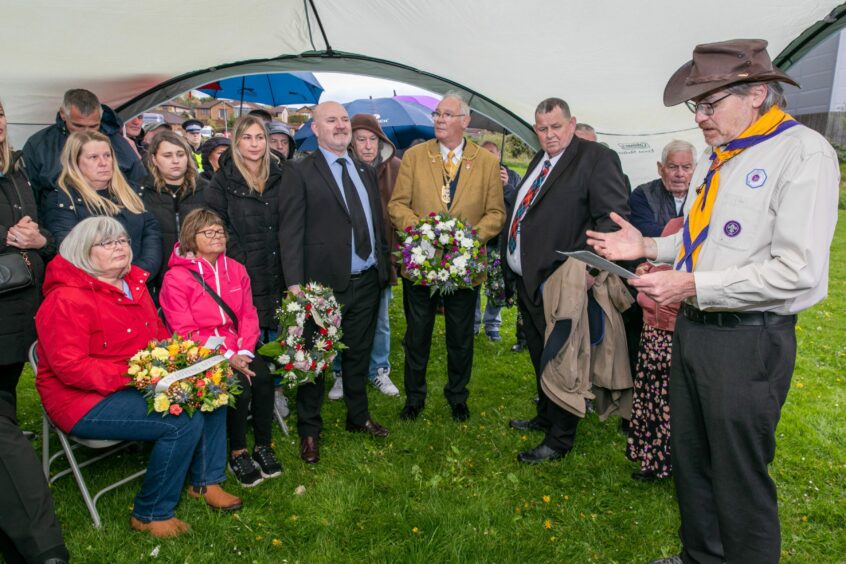A memorial service to mark the 50th anniversary of the Seafield Colliery disaster – in which five miners were killed – has taken place just yards from where the pit once stood.
A special service of remembrance and wreath-laying ceremony attended by Fife provost Jim Leishman, took place on Seafield beach on Wednesday evening.
The memorial was capped off with a two-minute silence at 6.45pm – the time when the disaster unfolded.
On the evening of May 10 1973, a major emergency operation was triggered after the roof of the pit head collapsed, killing five men.
Other miners were trapped underground but later managed to escape to the surface.
The names of the five who perished that fateful day were read out as a mark of respect as those gathered fell silent.
James Comrie, 49, assistant shearer operator; Angus Guthrie, 20, brusher; Robert Henderson, 59, chocker; James Holmes, 53, chocker and Thomas Kilpatrick, 38, leading man, were all victims of the disaster.
A poem, written by Freddie Dixon, who survived the disaster, was also read out at the service while prayers were given by Rev Dr Graham Deans from Linktown Church.
Following the service, many also gathered for refreshments and to share memories of that fateful day.
The event was organised by Explorer Scouts from the 80th Fife Scouts troupe who also took part in the memorial proceedings.
Graeme Ferguson, Adventure Scout leader, The Courier that he was “immensely proud” of the Scouts for organising the event.
He said: “The idea came about in February after the Scouts had been researching Seafield’s local history and the discussion about the mining disaster that followed.
“Given that the 50th anniversary was approaching, they agreed it was vital that the men who died should be remembered.
“They then wrote to invite politicians and community representatives and any former Seafield miners that they could find.
“It’s a hugely significant, albeit tragic, part of the town’s history but I’m proud of them for wanting to do something meaningful to mark a tragedy that happened long before any of them were born.”
Seafield Colliery was one of Scotland’s successful superpits after production began in 1965, and the weekly output was an average of 26,000 tons at the time of the tragedy.
Despite claims that the pit still had an estimated 150 years worth of coal yet to be mined, Seafield closed in 1988.















Conversation